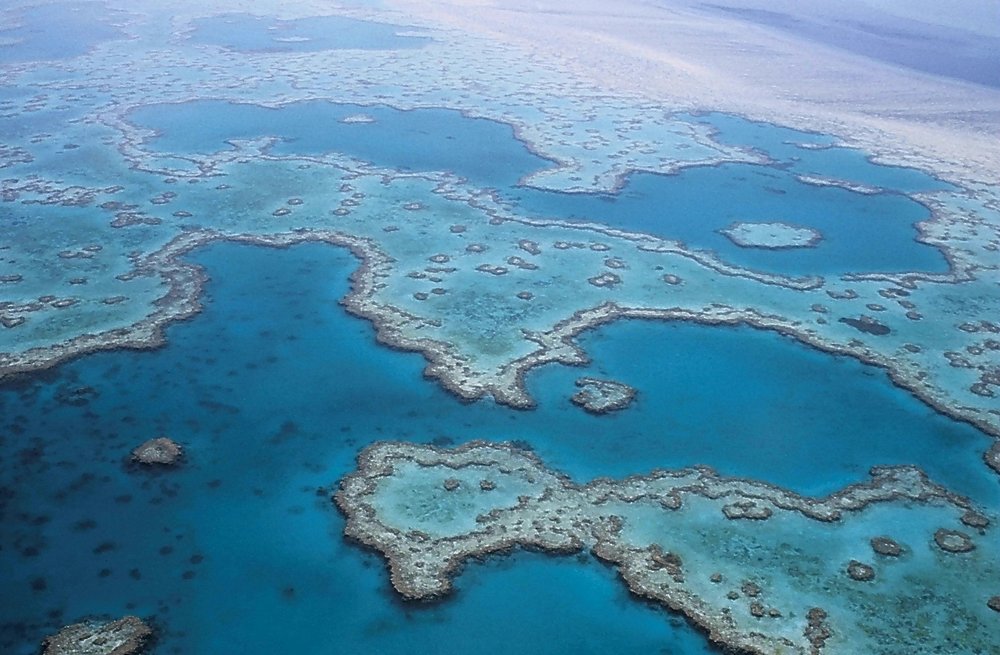The Underwater Wonder: An Inside Look Of The Great Barrier Reef

Often revered as one of most breathtaking scenes in nature, the Great Barrier Reef dances with life in the Pacific Ocean. This magnificent reef is one of the most visited tourist attractions home to colorful marine life. Not only does this reef provide a home to animals but also stimulates Australia's economy. The dense crowds of tourist provide a steady income to many of the local stores and shops that rely on the reef’s beautiful attractions. Climate change, however, has taken its toll on this mesmerizing ecosystem. Enji wants to try and reveal just how extensive this damage is and how it compares to previous years. We want to tell you an unbiased opinion of just how grave the circumstances are in the Great Barrier Reef.
Overview

As always before we can dive right into any topic, you need to have a bit of background information to fully comprehend the complexity of the Great Barrier Reef. If you think this reef is simply another habitat, you would be partially right. The Great Barrier Reef consists of more than just the coral, it has small islands, caves, drop-offs, and beaches. Approximately 214000 square miles, this reef is bigger than the United Kingdom, Switzerland and Holland combined.
According to the official website for the Great Barrier Reef Marine Park Authority this reef is home to more than “ 600 types of soft and hard corals, 100 species of jellyfish, 3000 varieties of mollusks, 500 species of worms, 1625 types of fish, 133 varieties of sharks and rays, and more than 30 species of whales and dolphins” this reef is one of the most diverse reefs alive today. Not only is it comprised of coral but also “includes some 600 continental islands, 300 coral cays, and about 150 inshore mangrove islands” this isn’t your average small reef.
Global Warming Effects

The effects of global warming are still debated to this day, even when there has been clear and consistent scientific evidence showing the effects of global warming are on the rise. One of the biggest and more widely see events is the warming oceans and its effect on the marine life and coral.
The Great Barrier Reef has been hit in recent years with massive back to back bleaching, causing coral to appear ghostly white and die from long-term effects. Corals are known for their vibrant and beautiful colors and although these events are not unheard of, there has been concern from the scientific community. The previous bleaching of corals has occurred in 1998 an in 2002, giving the coral time to heal, but the recent occurrence of the 2016 and 2017 back to back bleaching has left scientist in utter disbelief.
Bleaching mostly occurs when the rise in sea temperature causes corals to shed stressed algae that live within. These small algae give the coral its beautiful breathtaking colors and provide the coral with oxygen, waste filtration, and up to 90% of their energy. Although recovery is possible given enough time, many corals will die due to long-term effects.
Severity and Time
Like the video above stated, it is possible to coral reefs to recover from bleaching events if given time. This healing process usually takes a healthy fast-growing coral about 10-15 years to recover. So, although the 2016 and 2017 event is catastrophic for the health of the coral, the 1998 and 2002 events still had significant damage in comparison.
Overall the 2017 bleaching caused a total of two-thirds of the coral to be affected, with the severity being concentrated in the northern part of the park. Because of the damage caused by the back to back bleaching occurrences, the Great Barrier Reef is being considered terminal by the scientific community. Although it is too early to tell how much of the coral will perish, scientist estimates the damages will be extensive and difficult to recover from.
There is still hope

Although the Great Barrier Reef is currently under severe distress, scientists have been advocating on Australia's behalf to save the world's largest living structure.
The Great Barrier Reef Marine Park Authority has been collaborating with the Australian Department of Environment and Energy to change policies and bring about a new change to protect the reef. This lead to heavy emphasis for Australia to meet and exceed the goals of the Paris Climate Change Agreement.
The Park Authorities have also made a long-term plan to protect and nurture the reef. The Australian and Queensland governments' Reef 2050 Long-term Sustainability Plan provides a framework for a 25-year plan and will provide the most current information on the reef’s condition and oversight. The plan is currently being reviewed.
The Great Barrier Reef Summit was also formed after the back to back bleaching, bringing together over 70 marine experts and leaders for the first summit. This summit discussed the importance of creating a blueprint for the counteractive measure to combating bleaching and other impacts on the Great Barrier Reef. Although still in its planning stages, the blueprint will help focus efforts on developing resilience initiatives for coral reefs.
Sources:
https://www.nytimes.com/2018/01/04/climate/coral-reefs-bleaching.html
http://www.gbrmpa.gov.au/managing-the-reef/threats-to-the-reef/climate-change
https://www.economist.com/blogs/economist-explains/2017/05/economist-explains-3
http://www.gbrmpa.gov.au/about-the-reef/facts-about-the-great-barrier-reef





